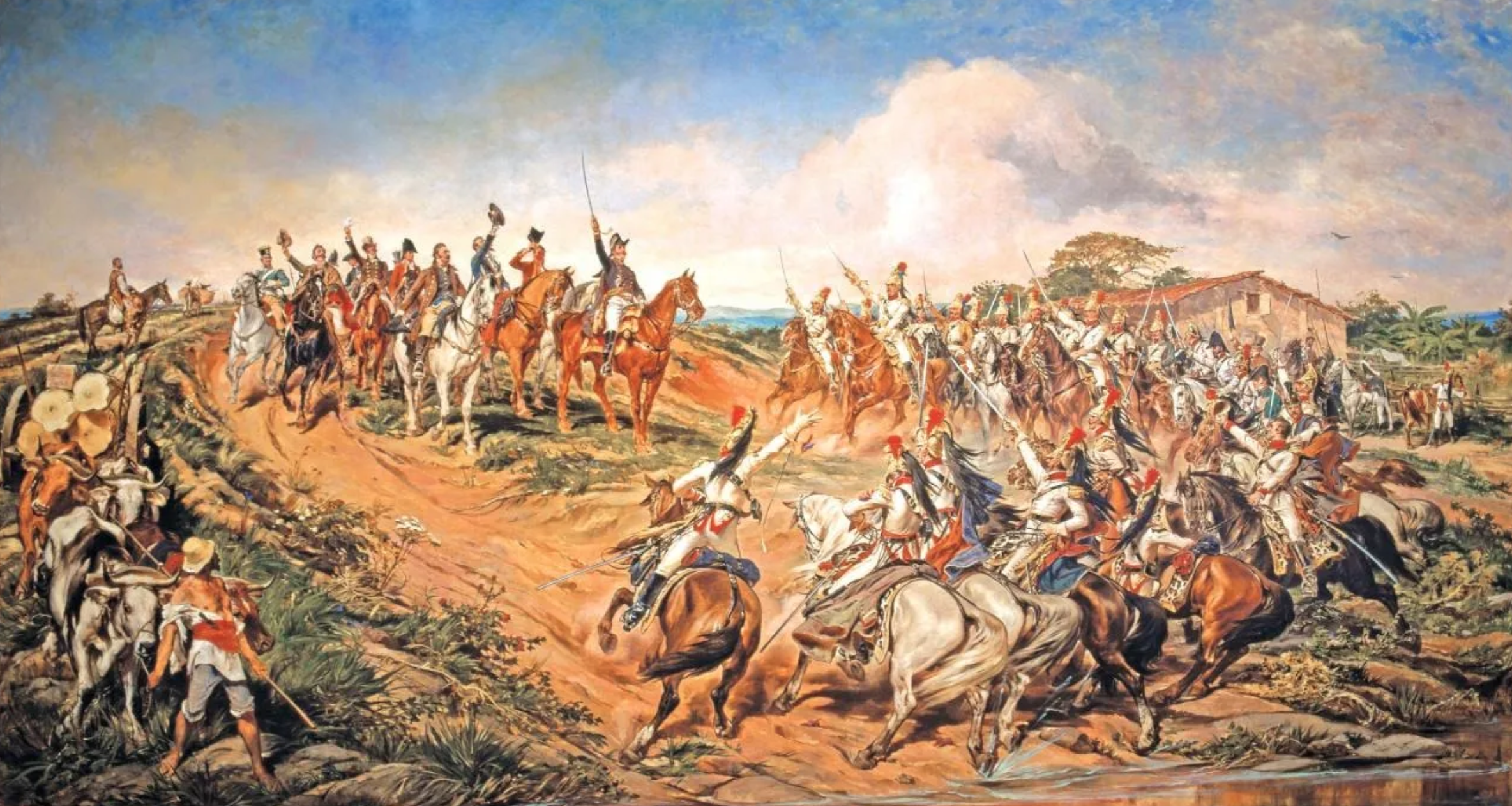Brazil | September 7th: An independence negotiated by the ruling classes

Amid this year’s Independence Bicentennial celebrations, the mainstream media and even some revisionist historians are trying to present a version of Brazilian history that does not correspond to the real facts.
By Jeferson Choma
TV series, soap operas, and reports with “specialists” seek to glamorize a decadent and archaic monarchy, to humanize a libertine and authoritarian Emperor committed to the institution of slavery, and even to present supposed popular participation in the independence process. But the real story of Brazilian independence was very different: blacks, indigenous peoples, and the poor population of the colony had practically no role in the movement.
The Brazilian independence process was an agreement of the ruling classes of the time. It was a response of the elites, monarchists, and slaveholders to the monarchy’s attempts to recolonize Brazil through the courts. Brazilian courts, or cortes, a kind of Portuguese Parliament, was instituted after the Liberal Revolution in Porto in 1820 and intended to create a national constitution.
The Brazilian court demanded the return of King João VI to Portugal, where his absolute power would be restricted. They also advocated that Brazil should revert to the status of a colony. Since 1808, with the arrival of the Royal Family in Rio de Janeiro (fleeing from Napoleon Bonaparte), the country had become the center of the Portuguese metropolis and the kingdom.
Incidentally, the fact that the colony was the seat of the metropolis (something unprecedented in history) is the one explanation for why Brazil had not been divided into several small nations, as happened in Spanish America.
Under pressure, D. João VI returned to Portugal, but before that, he told his son, on April 24, 1821: “Pedro, if Brazil separates, let it be for you, who will respect me, and not for some adventurer.”
Success for the elites
The arrival of the Royal Family in 1808 broke the isolation of Brazil from the world market. The move of the court resulted in several economic reforms, the most important of which was the opening of Brazil to imports and exports of goods, especially to England, the dominant nation of world capitalism at the epoch, an enemy of Napoleon which had helped the Royal Family escape from Europe.
The result was the emergence of a “metropolitan” bourgeoisie that remained in the colony, increasingly enriched by Don João’s reforms. The return of Brazil to the status of a colony would damage their business and bring them losses. Therefore, they opted for a better way out of independence, which was proclaimed by the son of the Portuguese king.
Even more critical: independence would be done “peacefully” and would maintain the hated slavery of the black population. Don Pedro’s commitment to slavery and the elites is the second explanation for why Brazil was not divided into several nations.
All this was very different from the independence process of the republics of Spanish America, where there were bloody civil wars, such as those led by Simón Bolívar and José de San Martín, with strong popular participation and which, for that very reason, defeated the Spanish metropolis. Not by chance, the conquest of independence in those nations also resulted in the end of slavery and the creation of republican regimes.
Like the devil fleeing from the cross
In addition to being attentive to what was happening in the rest of the continent, Brazil’s slave-owning elites feared any popular participation in the independence process. Above all, they feared a slave revolution, as had occurred in Haiti between 1791 and 1804. And therefore, with rare exceptions, as in the case of Bahia, although there were popular sectors and movements that defended and fought for independence, the process was conducted in such a way as to anticipate and exclude them.
Something that was represented in the famous painting “Independência ou Morte” by Pedro Américo, painted more than 60 years later as a work of ideological propaganda of the Second Empire and the positivist ideology that prevailed at the time.
In it, the people are treated as mere spectators, forced to watch the transformation of Brazil into an independent nation by the militarized hands of the companions of a “heroic” Don Pedro, seeing everything from the outside.
Born dependent
In 1825, in order to have its independence recognized, Brazil agreed to pay Portugal’s foreign debt to England, amounting to two million pounds sterling. It also paid another 600,000 pounds sterling directly to Portugal. To obtain this amount, Brazil made a loan with the banker Rothschild (3.6 million pounds), mediated by the corrupt Marquis of Barbacena, a slave lord, who also negotiated a longer term with England to maintain slavery. It was the beginning of our foreign debt. Brazil was born dependent.
True independence
Formal political independence was followed by other forms of domination and dependence on foreign powers. So we have no reason to commemorate something that does not exist. After 200 years, Brazil still needs real independence, which can only be won by the workers and the oppressed in the struggle for socialism.
July 2: the War of Independence in Bahia
However, an honorable exception to popular exclusion occurred in Bahia, where the population was driven to fight for independence when Portuguese troops did not accept Brazil’s break from Portugal. There, it was primarily black men and women, slaves and freedmen, women and the poor in general who were at the forefront of the anti-colonial struggle against Portuguese domination in Brazil.
Therefore, names such as Maria Quitéria de Jesus Medeiros, and Maria Felipa, among others, should be remembered as heroes of Brazilian independence. The war ended only on July 2, 1823, when the Baianos celebrated their independence with great popular festivities, not with parades of tanks and soldiers, as on September 7.
However, Brazil would continue to be the last country to abolish slavery, held by iron and fire by the monarchy for another 66 years.
Article published in www.pstu.org.br, 9/9/2022.




